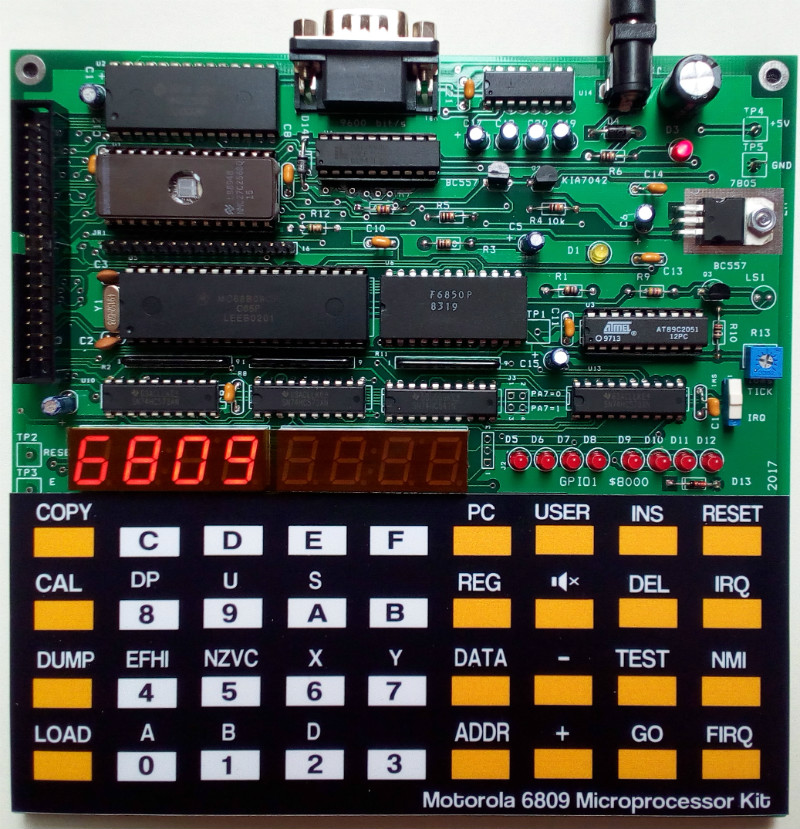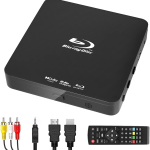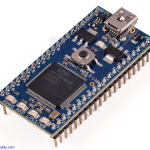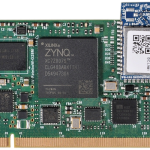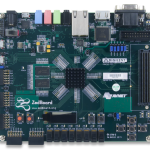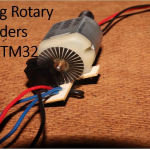The Motorola 6809, launched in 1978, stands out as an influential 8-bit microprocessor that cleverly incorporated several advanced 16-bit features. Offering hardware multiplication and operational efficiencies, the 6809 provided a significant upgrade over its predecessor, the 6800, and even rivaled its contemporaries like the Z80 and 6502. It powered notable systems such as the TRS-80 Colour Computer, which remains popular in retro computing circles today. Moreover, enthusiasts like Ted have harnessed modern technology, using a Teensy microcontroller to create a cycle-exact 6809 emulator that showcases the chip’s capabilities. This combination of vintage hardware and current innovations illustrates the lasting legacy of the Motorola 6809 and its ongoing impact in the world of microprocessors, making it a fascinating subject for both programmers and retro tech aficionados alike.
Introduced in the late 1970s, the 6809 processor has made waves in the development of computer technology, particularly within the realm of 8-bit computing. Known for its remarkable features, including hardware math capabilities and a sophisticated architecture, this microchip has powered a variety of iconic computer systems, notably the Colour Computer series. Tech enthusiasts and developers today often experiment by emulating the 6809’s functionality using modern microcontrollers like the Teensy, reviving classic software experiences. From integrated development environments to in-circuit emulators, this vintage microprocessor continues to inspire innovation and creativity in the retro computing community. The enduring charm of the Motorola 6809 showcases its integral role in shaping today’s computing landscape.
The Legacy of the Motorola 6809 Microprocessor
Released in 1978, the Motorola 6809 microprocessor is heralded as one of the most advanced 8-bit chips of its time, boasting a myriad of features that provided a substantial leap forward compared to its predecessor, the 6800. While fundamentally an 8-bit microprocessor, it incorporated many 16-bit capabilities, including an instruction set that allowed for efficient hardware multiplication. This advantage made the 6809 a suitable choice for a range of applications that required complex arithmetic computations, enhancing its appeal among developers and engineers.
Despite its technical merits, such as faster processing and better handling of interrupts, the 6809 never reached the commercial heights achieved by competitors like the Z80 and the 6502. Nonetheless, it found a lasting legacy in systems like the TRS-80 Colour Computer, where enthusiasts continue to explore and develop for this remarkable piece of technology. The 6809’s architecture played a crucial role in shaping the early computing landscape, and its influence can still be seen in many modern programming platforms.
Understanding Teensy Emulators and Their Uses
Teensy emulators, particularly the Teensy 4.1, represent a fascinating blend of modern and retro technology. Crafted to replicate older microprocessors like the Motorola 6809, these emulators utilize contemporary hardware to create highly accurate representations of vintage computing experiences. Ted’s innovative approach demonstrates how a simple rearrangement of pinouts and voltage translation can yield a highly functional emulator capable of running legacy applications. Such projects not only celebrate the history of computing but also provide a gateway for new generations to interact with classic software like Extended Colour BASIC.
The accuracy of the Teensy emulator lies in its ability to adhere closely to the original cycle diagrams outlined in the Motorola datasheet. By matching the cycle timings and even improving upon them—such as eliminating unnecessary dummy cycles—developers can achieve performance improvements. For instance, this type of emulation can effectively double the clock speed of original systems from approximately 1MHz to 2MHz, allowing users to experience software in ways that far exceed what was originally possible.
The TRS-80 Colour Computer: A Case Study
The TRS-80 Colour Computer, known affectionately as the CoCo, was one of the standout systems that utilized the Motorola 6809 microprocessor. Launched in the early 1980s, it catered to both hobbyists and educators with a vibrant palette and a suite of programming capabilities. The CoCo’s architecture allowed programmers access to the unique features of the 6809, making it a favorite for those delving into graphics and sound programming, which were essential for the gaming industry during that era.
In recent years, the CoCo has seen a renaissance of interest, particularly with the advent of emulation technology. Projects like Ted’s Teensy emulator enable a seamless revival of classic software, redefining how legacy applications run on modern hardware. Enthusiasts can now experience the TRS-80 Colour Computer’s capabilities without the constraints of original hardware, allowing for further exploration and innovation in retro computing.
The Importance of In-Circuit Emulators in Microprocessor Development
In-circuit emulators (ICE) have played a crucial role in the development and debugging of microprocessor-based systems, particularly during the dawn of 8-bit and early 16-bit systems like the Motorola 6809. These specialized tools allow developers to test and troubleshoot their designs in real-time, providing insights into the internal state of the microprocessor. By stepping through each clock cycle, engineers can identify and resolve issues with both software and hardware, facilitating a smoother development process.
Historically, ICE were bulky devices filled with circuitry and connected to personal computers for control and monitoring. This setup proved invaluable in reducing the time spent burning EPROMs and avoiding the need for tedious UV erasing during the prototyping phase. With SRAM being used as a substitute for ROM, developers could iteratively test their designs, enhancing efficiency and innovation in the era of 8-bit microprocessors.
Hardware Multiplication: A Game Changer for 6809 Applications
One of the standout features of the Motorola 6809 microprocessor is its ability to perform hardware multiplication, a significant enhancement over many of its contemporaries. This capability allowed for faster and more efficient calculations within applications, reducing the loads on system resources and enabling more complex algorithms to run smoothly. For programmers, this meant they could develop applications with sophisticated mathematical functions without sacrificing performance.
The incorporation of hardware multiplication into the 6809’s architecture not only improved the speed of processing but also expanded the scope of what could be accomplished with an 8-bit microprocessor. Enhanced mathematical functions became integral in graphic processing and sound synthesis, both crucial for the development of rich multimedia applications during the early computing boom. Thus, the hardware features of the 6809 played an essential role in defining the capabilities of systems that leveraged its power.
Emulators in Retro Computing: Bridging the Past and Present
The rise of emulators has transformed the way we interact with retro computing systems, enabling enthusiasts and newcomers alike to explore once-obscured platforms like the Motorola 6809. By simulating the original hardware on modern devices, emulators such as Ted’s Teensy emulator allow users to relive the experience of classic software without needing the obsolete hardware. This approach not only preserves the legacy of these systems but also makes them accessible to a broader audience.
Moreover, these emulators provide a rich testing ground for developers who want to create new software for vintage systems or experiment with existing titles. The ability to speed up or modify hardware parameters opens up exciting possibilities for innovation within the retro computing scene. Whether testing classic video games, educational software, or innovative applications, emulators play a key role in keeping the spirit of retro computing alive and thriving.
The Evolution of Microprocessors: From 6800 to 6809
The evolution from the Motorola 6800 to the 6809 is a profound example of technological advancement in microprocessor design. The original 6800, released in 1974, laid the groundwork for 8-bit processing, yet it was the 6809 that truly revolutionized the space with features that mirrored some aspects of 16-bit architecture. This progression not only enhanced computational power but also facilitated more complex programming practices, benefiting developers in multiple domains from education to gaming.
The improvements in the 6809, such as its more sophisticated addressing modes and instruction set, showcased Motorola’s commitment to innovation. These enhancements enabled programmers to write more efficient code and exploit the microprocessor’s capabilities more effectively, fostering a community of developers dedicated to pushing the limits of what 8-bit technology could achieve. The legacy left by these early microprocessors can still be seen today in modern computing practices and hardware architectures.
Challenges Faced by the Motorola 6809
Despite its technological prowess, the Motorola 6809 faced significant challenges in the market. Competitors like the Z80 and 6502 dominated the landscape, often due to their broader support ecosystems and stronger marketing strategies. Many developers gravitated towards systems that showcased these processors, resulting in the 6809 being overlooked, even though it offered superior performance in several technical aspects, including handling more complex tasks and multitasking.
Another challenge was the relatively limited number of commercially available systems that utilized the 6809, which impacted its visibility and adoption rate. As a result, while the chip was highly regarded among enthusiasts, it never penetrated the broader market in the way that other microprocessors did. This narrative highlights how market forces can overshadow technical innovations, affecting the trajectory of technology development and adoption.
Future Prospects for the Motorola 6809 Community
Looking forward, the community surrounding the Motorola 6809 remains vibrant and engaged, propelled by the resurgence of interest in retro computing and DIY projects. Innovators are constantly discovering new ways to utilize the 6809 for contemporary applications, breathing new life into forgotten technology and fostering a nostalgic appreciation among enthusiasts. Projects like Ted’s Teensy emulator serve as a testament to the enduring legacy of the 6809 and its relevance in modern computing.
As technology continues to evolve, the adaptability of the 6809 microprocessor ensures that it will remain a point of exploration for hobbyists and developers. From creating new software applications to enhancing existing ones, there’s a promising landscape ahead for those who appreciate the intricacies of this classic chip. The future of the Motorola 6809 community lies in continuing to innovate while celebrating the rich history of microprocessor technology.
Frequently Asked Questions
What features distinguish the Motorola 6809 from other 8-bit microprocessors?
The Motorola 6809 is notable for its advanced architecture compared to other 8-bit microprocessors. It includes hardware multiplication, a powerful instruction set, and 16-bit capabilities, allowing it to perform tasks typically reserved for more complex processors. Its design provided a technical edge over contemporaries like the Z80 and 6502, despite not achieving similar commercial success.
How does the Motorola 6809 compare to the TRS-80 Colour Computer?
The TRS-80 Colour Computer utilized the Motorola 6809 as its main microprocessor, enabling it to run a variety of software applications effectively. This relationship highlights the 6809’s capacity for handling graphics and multimedia tasks better than many other 8-bit microprocessors of its time, making it a versatile choice for home computing.
What is a Teensy emulator for the Motorola 6809 and how does it work?
A Teensy emulator for the Motorola 6809 is a modern emulation solution that utilizes the Teensy 4.1 microcontroller to replicate the functionality of the 6809 chip. Ted’s implementation involved a precise match to the cycle diagrams from the Motorola datasheet, allowing the emulator to run software like Extended Colour BASIC on the TRS-80 CoCo with excellent timing accuracy and performance enhancements.
Can the Motorola 6809 perform hardware multiplication, and why is it significant?
Yes, the Motorola 6809 is one of the few 8-bit microprocessors that supports hardware multiplication. This feature is significant because it allows for faster processing of mathematical operations directly within the CPU, which improves performance in applications that require complex calculations, thus giving the 6809 an edge over other 8-bit processors.
What improvements does the Teensy emulator bring to the original performance of the Motorola 6809?
The Teensy emulator can significantly enhance the performance of Motorola 6809 applications, effectively doubling the clock speed from approximately 1MHz to 2MHz by removing unnecessary dummy cycles. Additionally, by mirroring the ROM and RAM inside the Teensy, performance improvements can reach up to 800%, demonstrating the potential of modern emulation techniques.
Why were in-circuit emulators important during the era of the Motorola 6809?
In-circuit emulators were crucial tools for developers working with the Motorola 6809 and similar microprocessors. They allowed engineers to debug hardware and software efficiently by providing real-time insights into the internal state of the microprocessor while stepping through code execution. This capability was invaluable for resolving issues during the development process.
What current projects are exploring the Motorola 6809 and its capabilities?
Current projects, like Ted’s Teensy emulator for the Motorola 6809, are exploring the classic microprocessor’s capabilities through modern technology. Such projects not only revive interest in vintage computing but also aim to improve efficiency and debugging tools, demonstrating the ongoing relevance of the 6809 architecture in today’s computing landscape.
How does the performance of the Motorola 6809 compare to later microprocessors?
While the Motorola 6809 was a benchmark 8-bit microprocessor with advanced features for its time, later microprocessors have significantly outperformed it in terms of speed, efficiency, and overall capabilities. However, the 6809 remains a fascinating example of early microprocessor design, particularly for applications where its unique features, like hardware multiplication, offered clear advantages.
What systems besides the TRS-80 Colour Computer have utilized the Motorola 6809?
Besides the TRS-80 Colour Computer, the Motorola 6809 was used in other systems such as the Dragon 32/64, the FD 8; and various arcade games and embedded systems. Its versatility and architectural strengths made it suitable for a wide range of applications in the 8-bit microprocessor era.
| Key Points | Details |
|---|---|
| Release Year | 1978 |
| Predecessor | Motorola 6800 |
| 16-bit Features | Though fundamentally an 8-bit microprocessor, it incorporated many 16-bit capabilities. |
| Key Advantages | Included hardware multiplication and more. |
| Notable Systems | Used in systems like the TRS-80 Colour Computer. |
| Emulation Project | Ted created a cycle-exact 6809 emulator using Teensy 4.1 for testing and development. |
| Performance Improvement | Success with overclocking and removing dummy cycles significantly increased speed. |
| In-Circuit Emulators | Vital for debugging, allowing cycle-by-cycle control and monitoring of the microprocessor. |
| Future Prospects | The emulator can potentially be expanded with PC software for better control and diagnostics. |
Summary
The Motorola 6809, a groundbreaking microprocessor introduced in 1978, marked a significant evolution from its predecessor, the 6800. With its integration of advanced 16-bit features into an 8-bit architecture, it offered hardware multiplication and distinctive advantages that elevated its performance. Although it fell short of the commercial success achieved by contemporaries like the Z80 and 6502, the 6809 still found its niche in various systems, notably the TRS-80 Colour Computer. Recent developments, such as Ted’s emulator project, have revitalized interest in the 6809, showcasing its capabilities and potential for speed enhancements. Emulation technology continues to play a crucial role in preserving the legacy and functionality of the Motorola 6809, ensuring it remains relevant among computing enthusiasts.

